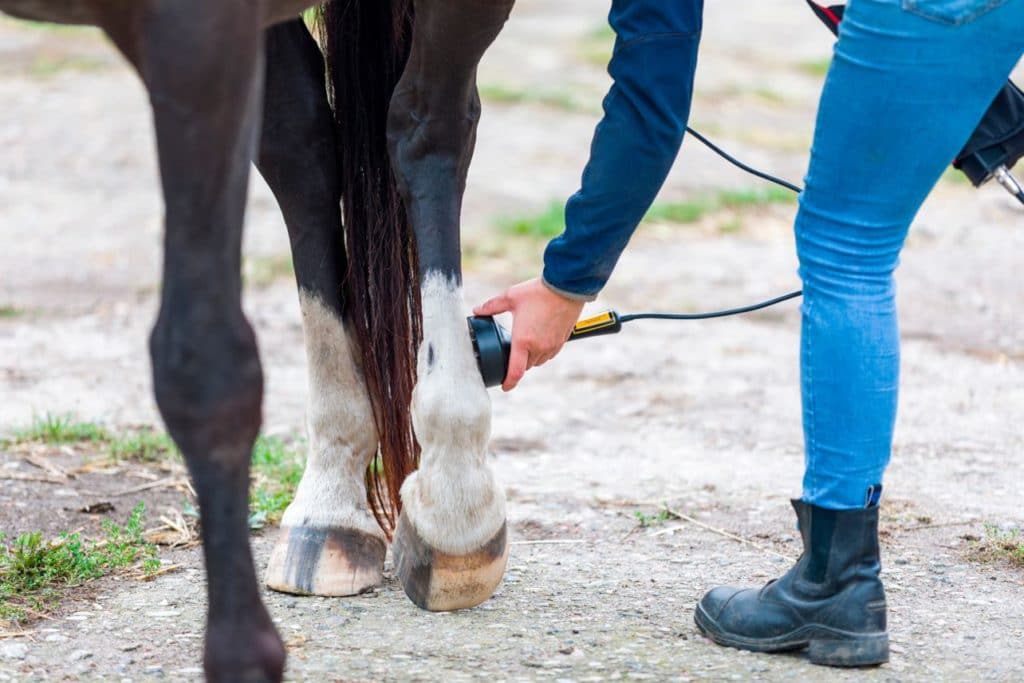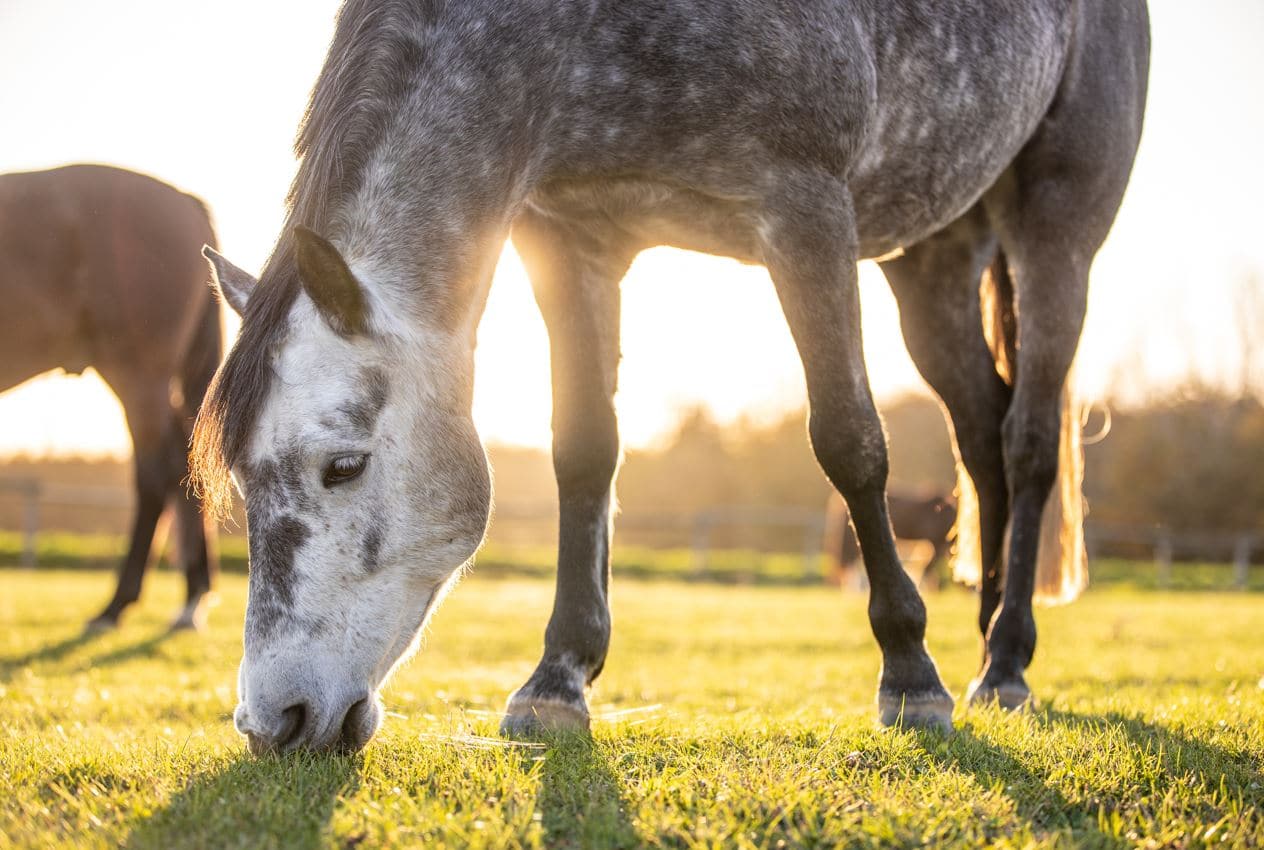Laminitis is a very painful disease of the horse, which mainly affects ponies, donkeys and heavy horses. It is now the second most common cause of death in horses and should be taken very seriously. The causes are multiple, as are the treatments. Here is what you need to know about laminitis in horses and what to do to treat it.
The causes of laminitis in horses
Laminitis is a condition that affects the soft tissues of your horse’s feet, causing inflammation. It affects the forelegs in particular, but also in some cases the hindlegs. In its most severe forms, laminitis can cause tissue necrosis or tilting of the distal phalanx of the hoof, which can lead to perforation of the sole.
Laminitis can occur as an acute or chronic attack. In the case of acute attacks, laminitis can occur after too much effort on hard ground (e.g. in endurance racing), after eating too much food, or after a severe illness such as pneumonia, colic, metritis, etc. A serious injury such as a fracture of a limb can also cause laminitis on the opposite limb, the horse shifting its weight to the healthy limb. This is known as “weight-bearing laminitis”.
In the case of chronic laminitis, the main causes are overweight, or an endocrine disease called Cushing’s syndrome, which causes an excess of cortisol in the blood.
The horses laminitis symptoms
Laminitis in horses can be recognized by several symptoms. In the case of an acute attack following a trigger, the first symptoms to appear are heat in the feet and an increase in the digitate pulse (pulse in the pastern, normally absent).
Then, we can observe more or less permanent trampling in the horse, a difficulty to give the feet or to move, a frank lameness, a camped attitude of the horse (which tries to transfer its weight on the hind legs) and in the most serious cases an immobility or incapacity to stand up. In cases of chronic laminitis, a change in the shape of the feet can be noted.
How to treat it ?
Several treatments are possible to cure laminitis in horses. In the case of an acute attack of laminitis, an anti-inflammatory treatment will be administered to your horse. To relieve it, you can also use cryotherapy, which consists of immersing your horse’s affected limb in a container of ice water.
Special cooling gaiters can also be applied to your horse. In addition to relieving the inflammation (and therefore the pain), this treatment will promote blood circulation in the foot. The farrier can also intervene to relieve the fork with an adapted shoe. During the treatment, your horse must remain at rest.

For chronic laminitis, orthopedic measures will make the horse more comfortable. You can also provide a soft and comfortable bedding for your horse in the box or a sand paddock if the laminitis affects a horse or pony that lives in the meadow.
If your horse is overweight, it will also be essential to adapt its diet in order to bring it back to a normal weight. The diet after laminitis must strictly respect the nutritional needs of your horse but no more. For horses suffering from Cushing’s syndrome, your veterinarian may prescribe a specific treatment.



